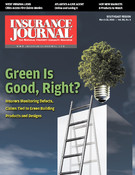Once-favored by insurers and consumers because of its promises to limit court costs and lower premiums, no-fault automobile insurance has lost some of its appeal.
For good reason, too. It has failed to deliver on its promises.
According to a new study issued by the RAND Corp., while no-fault insurance was intended to lower the cost of compensating people involved in automobile accidents by taking cases out of the court system, it actually increased costs because medical claims rose sharply instead.
Injury costs under no-fault were only 12 percent higher in 1987 relative to tort-based insurance, but by 2004 costs were 73 percent more expensive under no-fault plans. That’s right: 73 percent!
In addition, those states that restricted lawsuits against other drivers actually had higher claim costs than states that permitted lawsuits.
“No-fault insurance is a classic example of the law of unintended consequences,” said James M. Anderson, lead author of the study, The U.S. Experience With No-Fault Automobile Insurance, and a researcher at RAND, a nonprofit research organization.
Currently, 29 states have tort-based policies, three states allow drivers to choose between less expensive “limited tort” insurance or more expensive “full tort” insurance, and the remaining states have some form of no-fault insurance. These numbers have remained fairly steady over the past decade.
Anderson said he and his colleagues believe medical costs increased largely because consumers who have no-fault policies tend to use more specialized types of medical treatment and because medical costs may be more likely to be covered by auto insurance rather than medical insurance in no-fault states. There also is evidence of greater medical cost inflation in no-fault states.
Despite the waning insurance and consumer group support for no-fault insurance, there are few signs that it will be repealed in most states where it now exists, the report says.
Anderson said further research is needed to determine exactly why medical costs grew so dramatically under no-fault insurance. The study also did not evaluate the extent to which no-fault shifts costs between auto insurers, medical insurers and medical providers, for example.
So it seems that in trying to rid the insurance system of some of the lawyers, no-fault has invited higher costs and utilization — including fraud — involving medical providers instead.
Maybe someday the correct formula will be found. But it appears no-fault is not it.
Was this article valuable?
Here are more articles you may enjoy.


 Private Equity Firms Expected to Unleash Middle-Market M&A Deals, Survey Says
Private Equity Firms Expected to Unleash Middle-Market M&A Deals, Survey Says  ’60 Minutes’ Homeowners Ask Court to Force DFS to Divulge Heritage Probe Info
’60 Minutes’ Homeowners Ask Court to Force DFS to Divulge Heritage Probe Info  MAPFRE Accuses AAA of Violating Long-Time Exclusive Marketing Agreement
MAPFRE Accuses AAA of Violating Long-Time Exclusive Marketing Agreement  Howden US Tells Judge Brown & Brown Employees Fled Due to ‘Mistreatment’
Howden US Tells Judge Brown & Brown Employees Fled Due to ‘Mistreatment’ 


